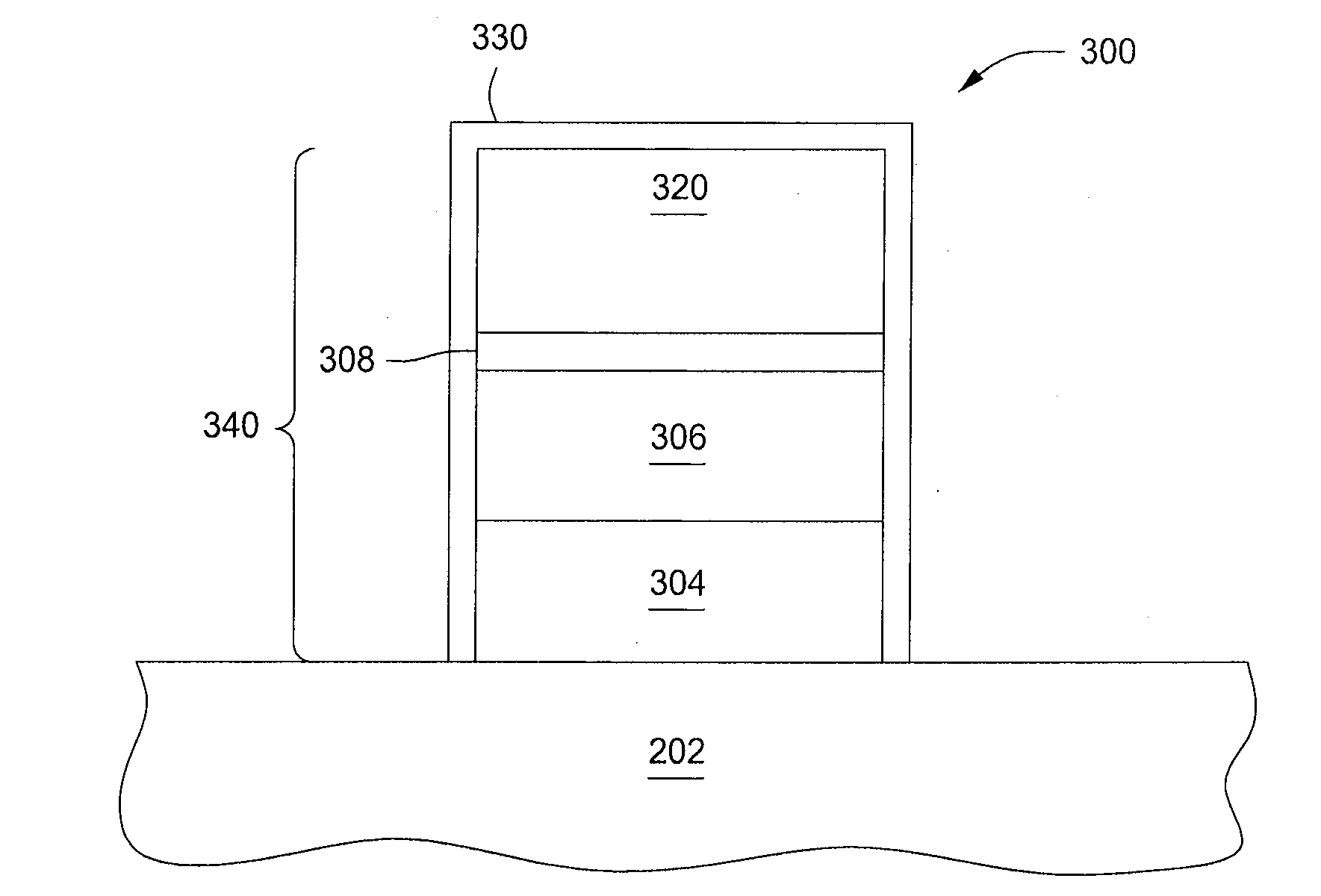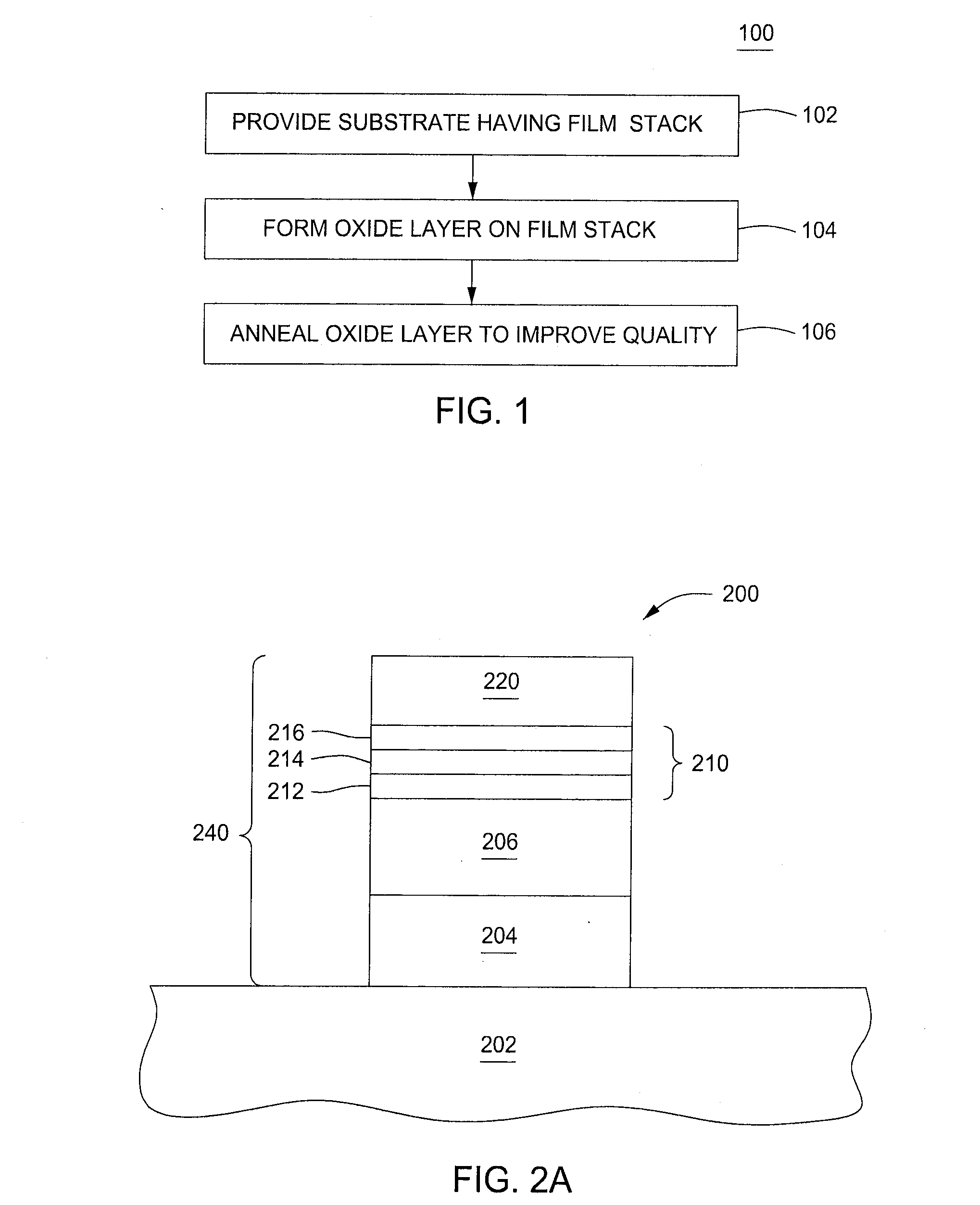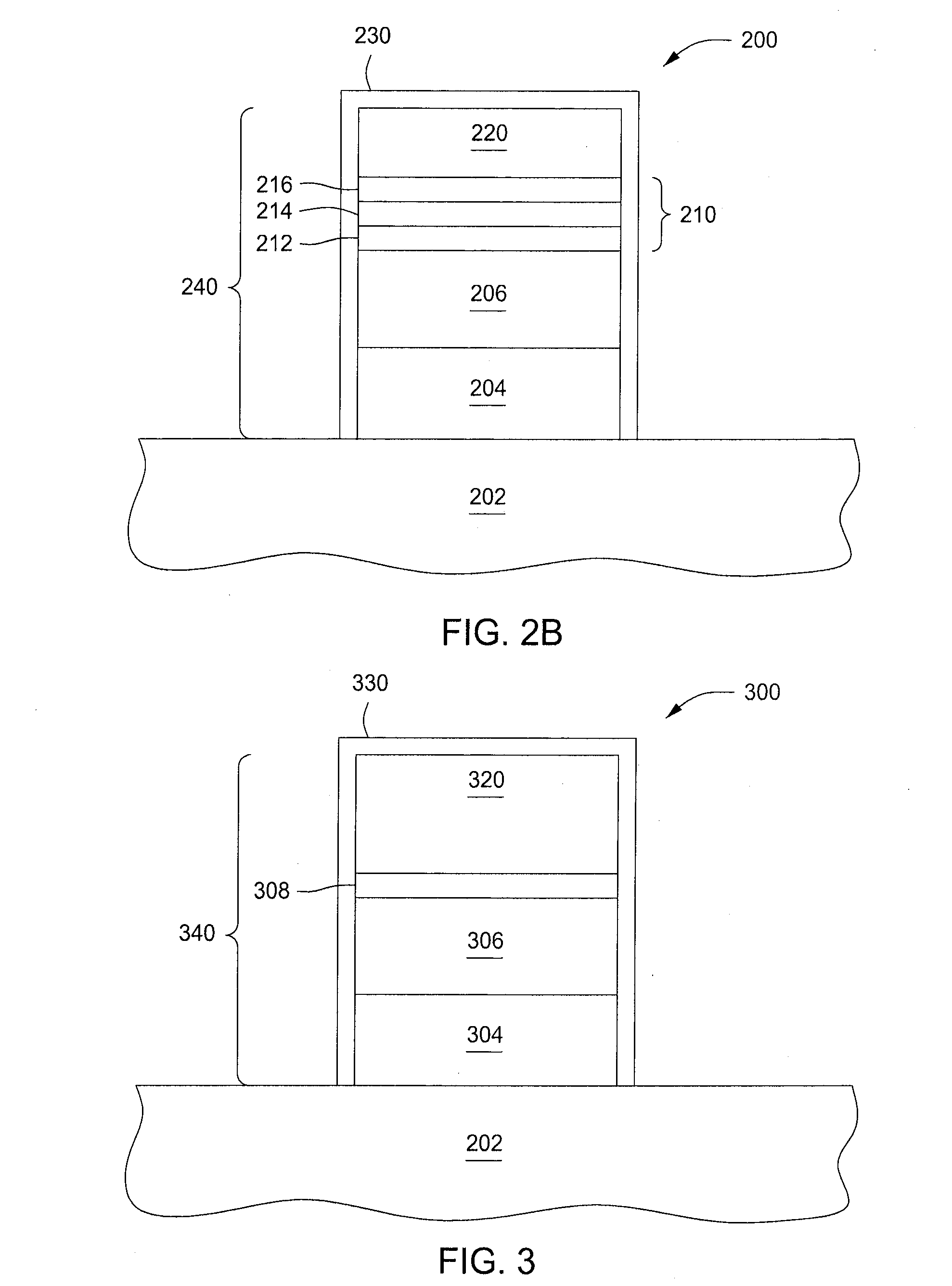Post oxidation annealing of low temperature thermal or plasma based oxidation
- Summary
- Abstract
- Description
- Claims
- Application Information
AI Technical Summary
Benefits of technology
Problems solved by technology
Method used
Image
Examples
Embodiment Construction
[0019]Embodiments of the present invention provide methods for the fabrication of oxide layers on semiconductor substrates. The inventive processes may advantageously provide formation of oxide layers with low impurities, reduced dopant diffusion, reduced poly silicon grain coarsening, and reduced metal oxidation as compared to conventional processes. In some embodiments of the present invention, oxide layers, such as a gate stack oxidation layer may be formed (e.g., an oxide layer deposited atop and along the exposed surfaces of a gate stack) upon a gate stack as utilized in logic and memory (such as dynamic random access memory, or DRAM, and FLASH) applications. As used herein, the phrase “forming an oxide layer on a substrate” includes total, partial, and selective oxidation processes performed on flat substrates and on structures formed on substrates, such as, for example, the tops and / or sidewalls of gate stacks disposed on the substrate.
[0020]FIG. 1 depicts a method 100 for fo...
PUM
 Login to View More
Login to View More Abstract
Description
Claims
Application Information
 Login to View More
Login to View More - R&D
- Intellectual Property
- Life Sciences
- Materials
- Tech Scout
- Unparalleled Data Quality
- Higher Quality Content
- 60% Fewer Hallucinations
Browse by: Latest US Patents, China's latest patents, Technical Efficacy Thesaurus, Application Domain, Technology Topic, Popular Technical Reports.
© 2025 PatSnap. All rights reserved.Legal|Privacy policy|Modern Slavery Act Transparency Statement|Sitemap|About US| Contact US: help@patsnap.com



